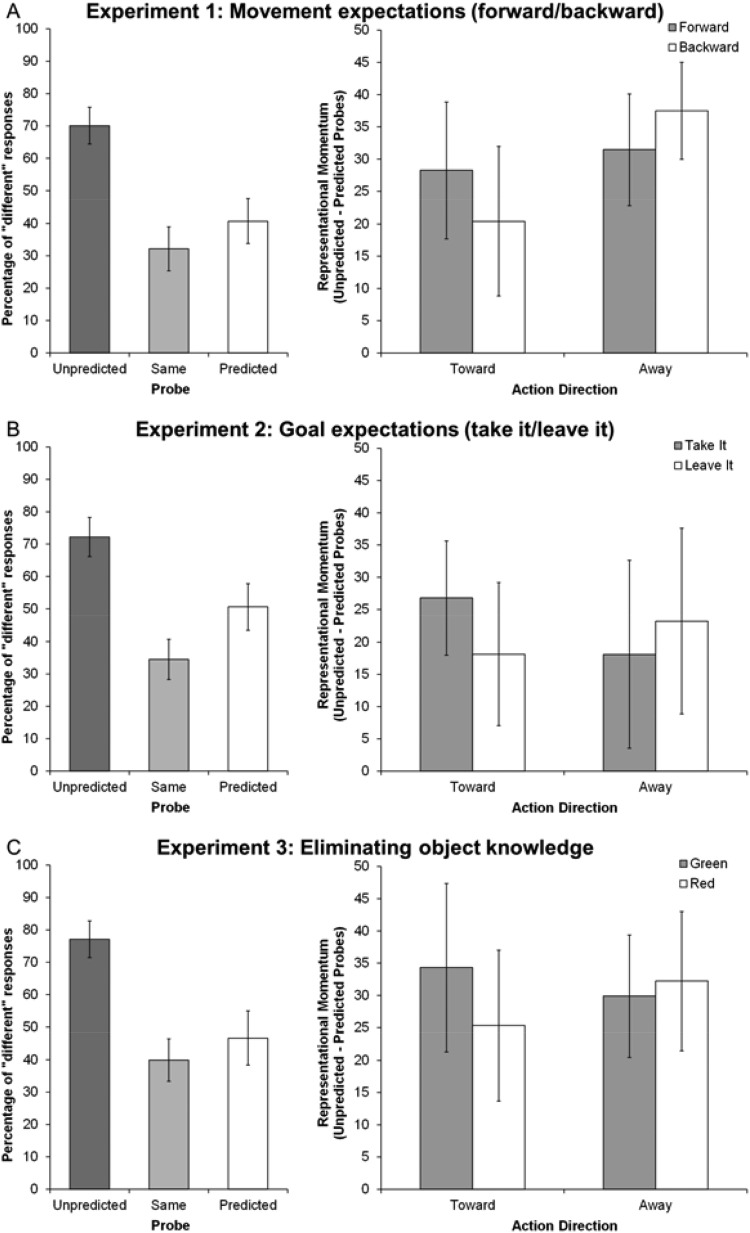Figure 2.
The representational momentum effect and the effect of prior expectation. Each row of graphs represents a different verbal response made prior to action onset. Participants said “Forward” if the object was safe and “Backward” if the object was dangerous (Panel A). Participants said “Take it” if the object was safe and “Leave it” if the object was dangerous (Panel B). The color of the object was randomly assigned as red or green, independent of object type, and participants said “Forward” if the object was green and “Backward” if the object was red (Panel C). The left column in each panel depicts the proportion of responses in which participants judged the position of the probe stimulus to be different from the final position of the action stimulus, for the three different types of probe. The right column depicts the interaction between prior expectation and action direction on the size of the representational momentum effect (unpredicted probe detections compared with predicted probe detections). Error bars represent 95% confidence intervals.

